- Learning time
- 20 minutes
- First play time
- 60 minutes
Cascadia
Designed by: Randy Flynn
Cascadia is a tile-laying game where you place not just one set of tiles (landscapes) but also the animals that inhabit them, which are placed on top. Landscapes always score points in the same way: a point per tile of your largest connected area, so for example if I have six river tiles that all connect, that’s six points. If my river tile connections are bigger than the other players, I get a two point bonus!
So it’s worth bearing this majority-scoring in mind as you add tiles – one per turn – to your ever-growing landscape. How the animals score is a little more tricky. There are five types of animal: foxes, elk, bears, salmon, and hawks. In each game cards each animal will score in a different way: you can deal out a random card for each animal or choose from the available cards: each of them show how a specific animal scores points. For example in our pictures above, you can just about make out that the salmon scores for being in a chain of tiles (the longer the better) the fox scores for being next to pairs of matching animals, the elk likes being next to other elks, and so on. Each scoring rule is pretty easy to understand at a glance.
Everyone begins with a large (three-tile equivalent) starting tile and a bunch of landscape tiles and animal tokens are laid out in pairs: on your turn you choose one such pair, adding the tile to your own personal landscape and putting the animal onto a tile as well – not necessarily the tile you just placed: animals can only be placed on certain tiles! Certain tiles trigger a pine cone bonus: these pine cones can be spent in a future turn to take a tile from one pair and an animal token from another, breaking the standard rule. Any pine cones in your possession at the end of the game are worth a point.
And so it continues, with everyone taking 20 tiles and tokens before the final scores are added up. The player with the most points wins.
The guru's verdict
-
Take That!
Take That!
Nothing confrontational: it's more the potential to deprive each other of things, inadvertently or otherwise.
-
Fidget Factor!
Fidget Factor!
Low to moderate. It can be played lightly, or it can be quite thinky.
-
Brain Burn!
Brain Burn!
It's really about managing the two-games-in-one of the tiles themselves and the animals on them. Mix in the impossibility of predicting what combinations will be available at any time, and you have an apparently bucolic theme masquerading a highly tactical puzzle.
-
Again Again!
Again Again!
Although the puzzle retains a similar flavour, the various ways the animals can score, the smaller beats of the turns being unpredictable, and some expansions mixed into the box give Cascadia a lot of replayability.

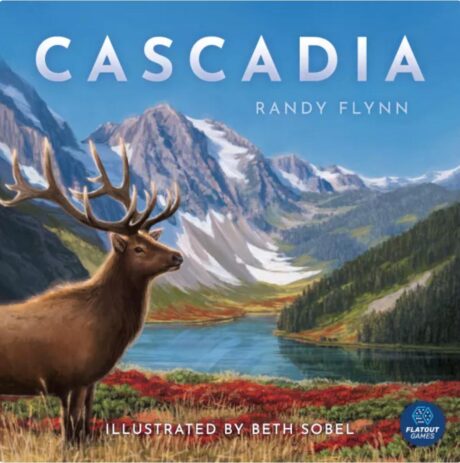

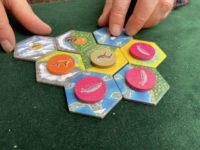
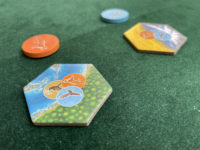
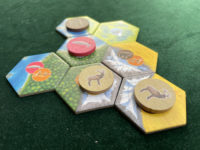
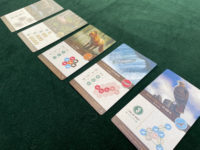
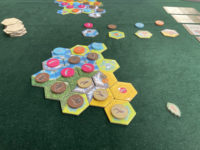




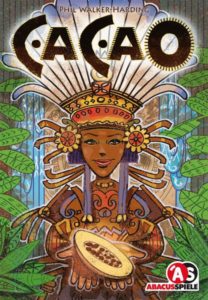
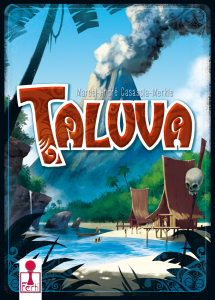
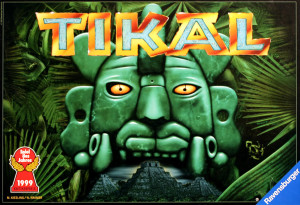
Sam says
The rules are very simple and kid-friendly, but the decisions can be tough. Rarely do you find a tile-and-token combo that fits exactly what you want, so you're always making compromises; potentially sacrificing one scoring option for another. When they combine and work well together is hugely satisfying, and pulling off a big points haul at the same time as preventing opponents getting one especially so! There's no direct interaction here between players at all, but canny players will keep an eye on what everyone else is doing and may harvest a few less points to make a sabotaging move. Or you can play a more gentle, growth-minded game and just focus entirely on what's best for you. It's beautifully presented, family friendly and rather more-ish. The only drawback I'd say is the speed of the game is very player-dependent: get four ponderers in a room together and the advertised playtime might be a considerable underestimate!